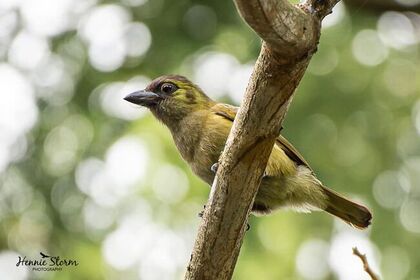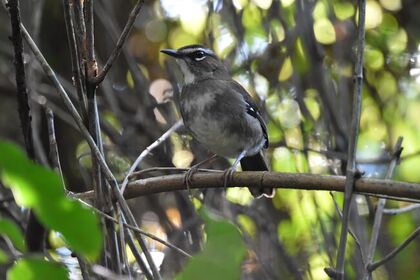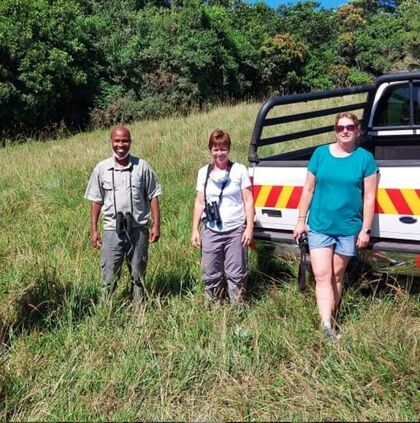The Ongoye Forest is a massive forest complex of almost 4000 hectares that is one of the last pieces of ancient Coastal Scarp forest found in South Africa. The rarity of this kind of forest means that it is the exclusive home to many species including 3 cycad species, dwarf chameleons, the Forest Green Butterfly, and the famous woodwardi subspecies of the Green Barbet.
Since the 1800s, Ongoye forest has been afforded protection by traditional Zulu leaders. In modern times, it was declared a conservation area in 1992 and as such is home to much wildlife. It is best visited with one of Birdlife South Africa’s accredited local guides, such as Junior Gabela.
Ongoye Forest is a well-known breeding site of the Eastern Bronze-Naped Pigeon - a rare and endangered Zululand special. The Spotted Ground-thrush can also regularly be found in these forests, skulking along the forest floor with the quiet and elusive Green Twinspot.
One of the most common requests in the region is the shy Green Malkoha, who live in numbers in the forest - if you are lucky enough to see one. The Mountain Wagtail is commonly associated with the streams in the forest and the special Yellow-Streaked Greenbul is a common resident.
The celebrity of these forests is the Green Barbet. These forests are the exclusive home of the South African subspecies of this bird. In summer, its call resonates through the forest - aiding with sighting it - but even in winter, these birds are resident and can commonly be seen.
Other great sightings in the area include the Gorgeous Bushshrike, Grey Sunbird, Scaly-Throated Honeyguide, Narina Trogon, Tambourine Dove, Black Throated Wattle-Eye, Crowned Eagle, Blue Mantled-Crested Flycatcher and Olive Bushshrike.
Our top specials for the region are:
- Green Barbet
- Green Malkoha
- Eastern Bronze-Naped Pigeon
- Spotted Ground-Thrush
- Lemon Dove
- Narina Trogon
If you are planning to visit Ongoye forest and the general region for birding, you are best off with a local guide to show you the best spots and keep you from being overwhelmed. At Zululand Birding with Junior Gabela, Ongoye forest is one of our specialties, and our BirdLife guides will help you make the most of your trip and tick off some of those extremely rare lifers from the region.




